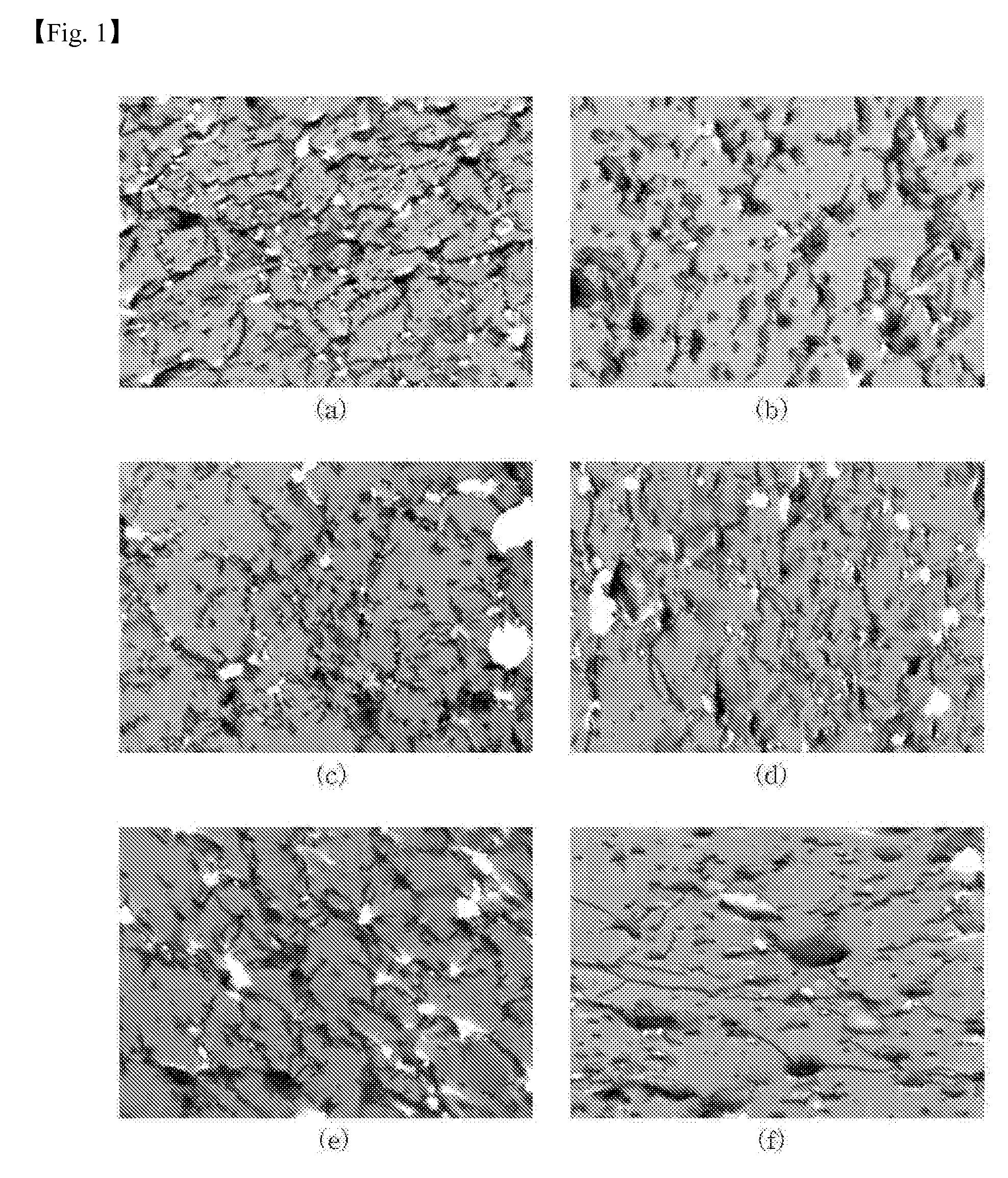Weather resistant thermoplastic resin having excellent low gloss characteristics and method of preparing the same
a thermoplastic resin and low gloss technology, applied in the field of weather resistant thermoplastic resins having can solve the problems of limited effectiveness of weather resistant stabilizer techniques, easy deterioration of abs resins, and limited use of abs resins for many products, so as to achieve excellent low gloss characteristics, maintain physical properties such as weatherability, impact strength, and excellent low gloss characteristics.
- Summary
- Abstract
- Description
- Claims
- Application Information
AI Technical Summary
Benefits of technology
Problems solved by technology
Method used
Image
Examples
example 1
[0125]A first reactant is prepared by mixing about 100 parts by weight of toluene, about 0.2 parts by weight of benzoyl peroxide (BPO) and about 0.05 parts by weight of t-dodecyl mercaptan (TDM) with about 100 parts by weight of a first monomer mixture including about 90 parts by weight of butyl acrylate (BA), about 5 parts by weight of styrene (SM), about 2 parts by weight of acrylonitrile (AN) and about 3 parts by weight of acrylic acid (AA). A polymer is prepared by polymerizing the first reactant at a temperature of about 80° C. for a residence time of 8 hours after injecting the first reactant at a rate of about 1 kg / hr into a first reactor (R-1) of a continuous polymerization reactor having three reactors, which are connected to one another in series, and in which jackets are installed to easily control the reaction temperature. The polymerization conversion ratio is about 90%, and the polymer prepared in the first reactor (R-1) is successively injected into a second reactor (...
example 2
[0141]A thermoplastic resin is prepared by the same method as in Example 1 except that about 0.33 parts by weight (an equivalent ratio of 1.5) of 1,4-butandiol (1,4-BDO) is used instead of about 1.47 parts by weight (an equivalent ratio of 1.0) of polyethylene glycol (PEG600). Physical properties are measured by the same methods as in Example 1, and the measured results are reported in the following Table 1. Further, FIG. 1 (b) is a TEM image of the thermoplastic resin prepared according to Example 2.
example 3
[0142]A thermoplastic resin is prepared by the same method as in Example 1 except that about 1.84 parts by weight (an equivalent ratio of 0.5) of polyethylene glycol (PEG1500) having a weight average molecular weight of 1500 is used instead of about 1.47 parts by weight (an equivalent ratio of 1.0) of polyethylene glycol (PEG600). Physical properties are measured by the same methods as in Example 1, and the measured results are reported in the following Table 1. Further, FIG. 1 (c) is a TEM image of the thermoplastic resin prepared according to Example 3.
PUM
| Property | Measurement | Unit |
|---|---|---|
| particle diameter | aaaaa | aaaaa |
| particle diameter | aaaaa | aaaaa |
| reaction temperature | aaaaa | aaaaa |
Abstract
Description
Claims
Application Information
 Login to View More
Login to View More - R&D
- Intellectual Property
- Life Sciences
- Materials
- Tech Scout
- Unparalleled Data Quality
- Higher Quality Content
- 60% Fewer Hallucinations
Browse by: Latest US Patents, China's latest patents, Technical Efficacy Thesaurus, Application Domain, Technology Topic, Popular Technical Reports.
© 2025 PatSnap. All rights reserved.Legal|Privacy policy|Modern Slavery Act Transparency Statement|Sitemap|About US| Contact US: help@patsnap.com



